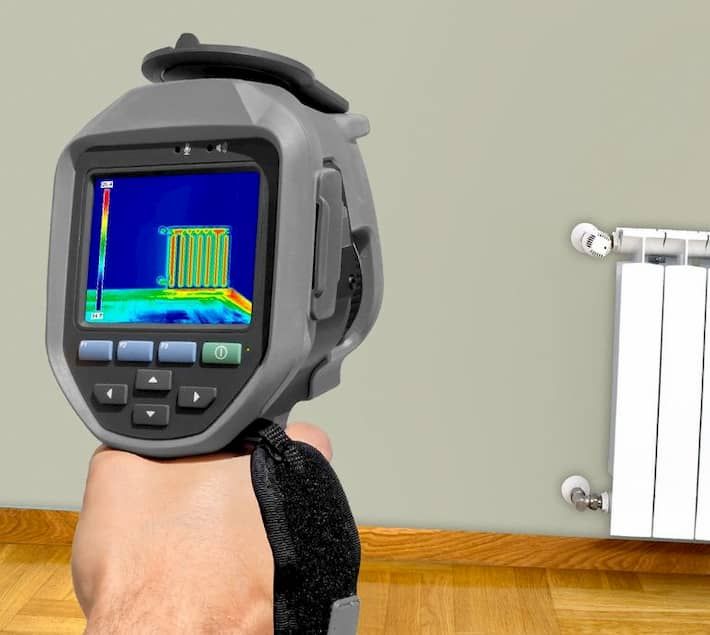Flame Ionization Detection (FID) is one of the most trusted and widely used technologies for detecting hydrocarbons in air, gas streams, and laboratory analyses. Known for its sensitivity, stability, and selectivity toward organic compounds, FID has become the benchmark in environmental monitoring, petrochemical quality control, and analytical chemistry North West leak detection. Whether it’s measuring volatile organic compounds (VOCs) in emissions or ensuring purity in fuel products, the FID stands as the gold standard in hydrocarbon detection.
Understanding How Flame Ionization Detection Works
At its core, the Flame Ionization Detector operates on a simple yet powerful principle—hydrocarbons produce ions when burned in a hydrogen flame. Here’s how the process unfolds:
- Sample Introduction: The gas sample containing hydrocarbons enters the detector through a small jet nozzle.
- Combustion: The sample mixes with hydrogen and air and is ignited to form a stable flame.
- Ion Formation: Carbon atoms in the hydrocarbons are converted to ions and electrons during combustion.
- Detection: A high-voltage potential between two electrodes attracts these ions, generating a measurable electrical current.
- Signal Output: The ion current is directly proportional to the number of carbon atoms present, producing a quantitative signal for hydrocarbon concentration.
This process makes FID highly sensitive to almost all organic compounds while being virtually unresponsive to inorganic gases like CO₂, H₂O, or N₂—making it ideal for detecting trace levels of hydrocarbons.
Why FID Is the Gold Standard
Several unique characteristics make FID the preferred method for hydrocarbon analysis across industries:
1. Exceptional Sensitivity
FID can detect hydrocarbon concentrations as low as parts per billion (ppb), enabling accurate measurements even in trace contamination studies. Its linear response over a wide range of concentrations allows reliable quantification of both low- and high-level samples.
2. Selectivity for Carbon Compounds
Unlike other gas detectors that may respond to multiple gases, FID is almost exclusively sensitive to hydrocarbons. This selectivity reduces false positives and simplifies data interpretation in complex mixtures.
3. Stable and Reliable Performance
Because the flame chemistry remains consistent under controlled conditions, FID provides exceptional signal stability and repeatability—crucial for long-term monitoring and laboratory calibration.
4. Broad Application Range
From environmental compliance testing to refinery operations, FID’s adaptability to various sample types makes it invaluable. It’s compatible with gas chromatography (GC), continuous emission monitoring systems (CEMS), and portable field analyzers.
Applications of Flame Ionization Detection
FID technology is deeply embedded in modern industry, science, and environmental protection. Its key applications include:
Environmental Monitoring
FID analyzers are extensively used to monitor total hydrocarbon (THC) emissions from industrial stacks, vehicles, and ambient air. Regulatory bodies rely on these measurements to ensure compliance with clean air standards.
Petrochemical and Refinery Operations
In refineries and chemical plants, FID is used for process gas analysis, ensuring product purity and detecting leaks in hydrocarbon streams. It helps optimize combustion efficiency and minimize emissions.
Gas Chromatography (GC-FID)
One of the most common uses of FID is as a detector in gas chromatography systems, where it provides precise quantification of organic compounds separated in the GC column. It’s ideal for analyzing fuels, solvents, and volatile organics.
Leak Detection and Safety Monitoring
Portable FID analyzers can detect fugitive emissions around pipelines, storage tanks, and valves. Their ability to sense even minute hydrocarbon leaks makes them essential for safety and environmental audits.
Research and Quality Control
In laboratories, FID supports the analysis of hydrocarbons in food packaging, indoor air quality studies, and material outgassing research—ensuring accuracy and reproducibility in results.
Advantages Over Other Detection Methods
While alternative detectors such as photoionization detectors (PID) and thermal conductivity detectors (TCD) exist, FID often outperforms them in hydrocarbon analysis.
- Higher sensitivity than PID and TCD for organic compounds.
- Better signal-to-noise ratio, ensuring accurate quantification at low concentrations.
- Stable calibration curve that requires less frequent recalibration.
- Minimal interference from water vapor or other non-organic gases.
However, it’s worth noting that FID requires a hydrogen fuel source and an open flame, which limits its use in certain hazardous or confined environments.
Limitations and Considerations
While FID excels in hydrocarbon detection, it does have a few constraints:
- It cannot detect inorganic gases such as CO, CO₂, NOx, or O₂.
- The hydrogen supply and flame maintenance require strict safety precautions.
- Field operation may need protective housing or calibration in variable environmental conditions.
Despite these limitations, advancements in FID design—such as micro-FID sensors and automatic calibration systems—continue to improve safety and portability.
Maintenance and Calibration Best Practices
To maintain precision and reliability, FID instruments should be routinely calibrated using certified hydrocarbon gas mixtures. Regular maintenance includes:
- Inspecting the hydrogen and air supply lines for leaks or contamination.
- Cleaning or replacing the jet nozzle to prevent carbon buildup.
- Checking electrode alignment for consistent ion collection.
- Zeroing and span calibration before each measurement session.
These simple steps ensure consistent detector response and extend the lifespan of the equipment.
The Future of Hydrocarbon Detection
Although new technologies such as infrared sensors and photoacoustic spectroscopy are emerging, FID continues to dominate hydrocarbon measurement due to its unmatched combination of sensitivity, simplicity, and reliability. Many modern systems now integrate FID with digital controls, data logging, and real-time analytics, allowing operators to monitor emissions continuously with minimal manual intervention.
Conclusion
Flame Ionization Detection remains the gold standard for hydrocarbon analysis because it delivers what few other detectors can—unparalleled sensitivity, specificity, and consistency. Whether used in a laboratory GC system or a field emissions analyzer, FID provides the accuracy needed to protect the environment, ensure product quality, and uphold industrial safety standards.
In a world increasingly focused on cleaner air and stricter regulations, FID continues to burn brightly—both literally and figuratively—as the definitive tool for detecting and quantifying hydrocarbons.


